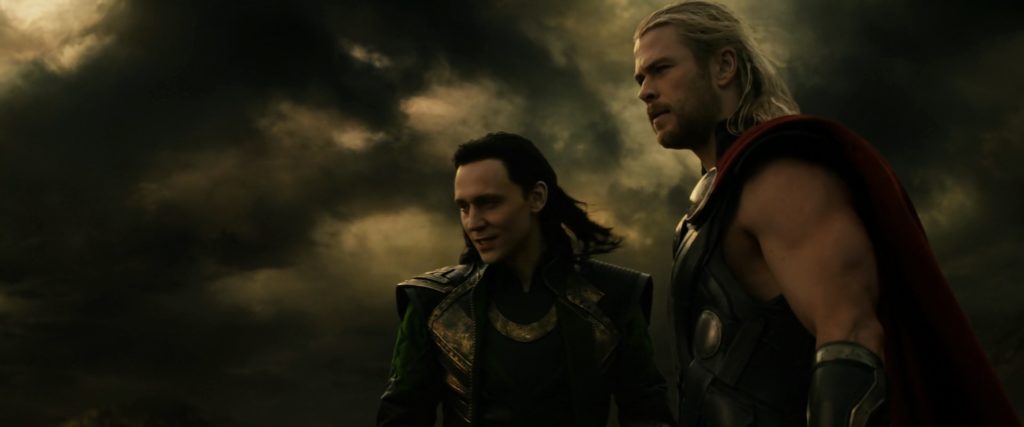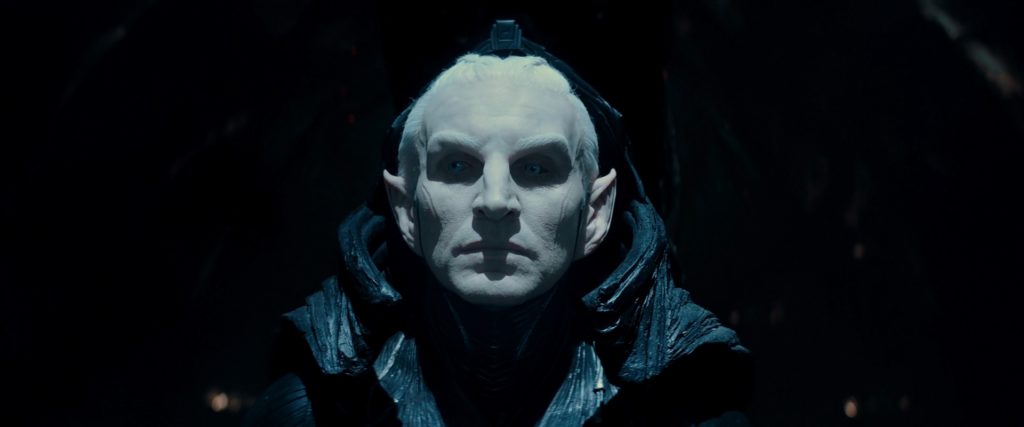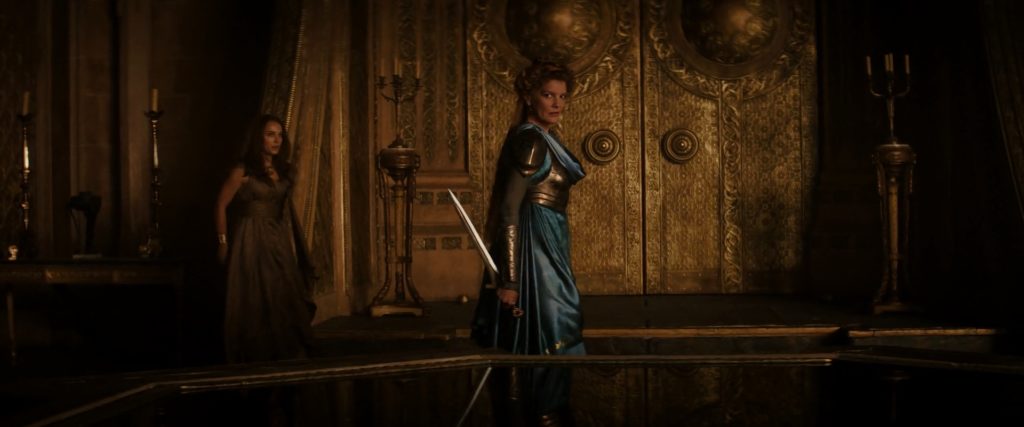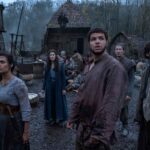In this weekly series, we chronicle the long road undertaken by the Marvel Cinematic Universe movies to arrive at Avengers: Infinity War. We introspect and discuss the movies from a critical and commercial standpoint while also considering the development efforts that went behind them. These articles may be occasionally sprinkled with spoilers so please make sure to skip the relevant sections when reading.
This post is about the 2013 movie Thor: The Dark World, the eight chapter in the Marvel Cinematic Universe.
Thor’s second entry in the Marvel Cinematic Universe holds the humdrum honor of being the first subtitled sequel in this ongoing series of films. It’s also the first sequel not starring Marvel’s lucky mascot Iron Man and was Marvel’s only other superhero to have received a sequel at the time other than the more well-known ones such as the X-Men, the Fantastic Four, Spider-Man and the said Iron Man. And despite the lackluster hype surrounding it compared to Robert Downey Jr. starrer Iron Man 3 or even Iron Man 2 for instance, Thor 2 out-grossed Thor by a wider margin than Iron Man 2 out-grossed Iron Man.
That I’m beginning a piece on Thor: The Dark World by conjuring several unremarkable statistics is probably testament to how uninteresting I find the movie and its plot. It’s probably the only MCU movie I find myself constantly disengaged in and one of the only ones which has gotten worse after repeated viewings, compared to some others, which have only improved after subsequent re-watches (more on this in upcoming articles). At 1 hour 52 minutes and stuffed with action sequences galore, it barely allows enough time for the characters to be soaked in and room for the plot to breathe. Before we know it, Jane Foster is roaming around Asgard as if on a tour to New Zealand’s The Lord of the Rings set, Thor and Loki have teamed up as partners to confront a common enemy and Odin and Thor are at loggerheads despite having presumably settled their differences in the first movie (last I remembered, Odin was supposed to be proud of Thor).
In a very ironic and distant metaphorical sense, I find aspects of Thor: The Dark World to mirror real-life happenings in Marvel Studios at the time. Similar to Malekith’s threat of plunging the Nine Realms into eternal darkness, the inner workings of Marvel Studios were somewhat infested by a plague of committee members that interfered in final cuts of movies and gave filmmakers a tough time. The movie itself had many contenders to don the directorial hat before departing over differences in creativity. Game of Thrones veteran Brian Kirk was among the first to be considered before things “didn’t work out”. Patty Jenkins was next but parted ways citing creative differences; the story she wanted to bring on-screen was different from the one the studio had in mind. That turned out to be a good thing though since Jenkins would go on to helm the wildly successful Wonder Woman and is now prepping for its sequel. Kenneth Branagh of Thor refused to return due to a tight production schedule that would’ve required him to start pre-production on the movie as soon as he was done with Thor, an urgency he wasn’t too keen on. Finally, another Game of Thrones alumni Alan Taylor won the coveted task of putting the movie together.
 Despite having solid directorial experience under his belt (he was responsible for some of the most successful and epic episodes of Game of Thrones including Season 1 Episode 9 Baelor), it seems he didn’t get to make the movie he wanted. Or he did but Marvel meddled with it and turned it into a different movie in post-production entirely. Alan Taylor was quite vocal about his disappointment with the movie which reflected in audiences and critic reviews to a certain extent. I remember being quite excited when Taylor signed on for the movie, hoping as he did that he’d bring to Thor the same grittiness he brought to Game of Thrones (minus the nudity of course). The movie turned out to be far from gritty, save for a few sequences at the opening showcasing the gravelly look that Taylor probably intended for the entire movie to have. The muddled nature of the movie however was seemingly rooted right in its script. As many as five people were involved in writing the movie and that’s excluding Joss Whedon who helped with some last-minute rewrites of scenes that were not working. Quite to my surprise, writers Christopher Markus and Stephen McFeeley were part of the mix too, although its unclear how much of their material made it to the final cut. Too many cooks spoil the broth anyone?
Despite having solid directorial experience under his belt (he was responsible for some of the most successful and epic episodes of Game of Thrones including Season 1 Episode 9 Baelor), it seems he didn’t get to make the movie he wanted. Or he did but Marvel meddled with it and turned it into a different movie in post-production entirely. Alan Taylor was quite vocal about his disappointment with the movie which reflected in audiences and critic reviews to a certain extent. I remember being quite excited when Taylor signed on for the movie, hoping as he did that he’d bring to Thor the same grittiness he brought to Game of Thrones (minus the nudity of course). The movie turned out to be far from gritty, save for a few sequences at the opening showcasing the gravelly look that Taylor probably intended for the entire movie to have. The muddled nature of the movie however was seemingly rooted right in its script. As many as five people were involved in writing the movie and that’s excluding Joss Whedon who helped with some last-minute rewrites of scenes that were not working. Quite to my surprise, writers Christopher Markus and Stephen McFeeley were part of the mix too, although its unclear how much of their material made it to the final cut. Too many cooks spoil the broth anyone?
So what is it about the movie that’s so irksome really? Let’s start with a basic outline of the plot without giving too much away (although there’s hardly anything to “spoil” here). Thousands of years ago, the Dark Elves raged a war which threatened to plunge the world into darkness. It involved unleashing the power of a dangerous substance, the Aether. Odin’s father Bor was successful in defeating the Elves but Malekith and his aide Algrim escaped and hid in hibernation waiting for the Aether to resurface. And resurface it did by unknowingly infecting Jane Foster who was wondering around a desolate world which she accidentally entered through a portal from earth. As it turns out, the Convergence – an event that aligns all Nine Realms perfectly with each other is occurring and causing gravitational anomalies to show up. Jane is taken to Asgard for a cure by Thor who, angered by Malekith’s actions on Asgard deduces that the best course of action is to draw Malekith out using the Aether and strike. To be able to make it out of Asgard on Malekith’s home world of Svarthalfheim, he enlists the help of the only one privy to knowledge about secret pathways – Loki. As expected though, things go wrong resulting in Malekith acquiring the Aether and headed towards earth to destroy London in what is the movie’s climactic battle sequence.
The entire plot in general feels like an oversized spectacle made with the sole intention to introduce the second Infinity Stone. Malekith as a villain is generally uninteresting and undeveloped with questionable motives – a result that could be as much an outcome of the mixed-up writing as it could be about studio interference. He wants the world to enter eternal darkness for what? And what would he himself have to gain if he ends up accomplish his goal? If his only motive is to defeat Bor’s son and prove him mortally wrong, the movie fails massively at portraying it. Christopher Eccleston does try hard to add a layer of depth and complexity behind Malekith’s actions but there’s only so much he can do when most of his screen time involves fighting and speaking Elvish.
 Thor himself seems to go back to his reckless ways, at least for a bit. Ever since the Bifrost was destroyed in Thor, the Nine Realms have been fighting wars amongst each other. With the Bifrost reconstructed, Thor and his Warriors Three along with Lady Sif take it upon themselves to bring peace to each of the realms by besting them in battle and forcing their surrender. A noble deed indeed and a natural extension of Thor’s journey from the previous movie. Yet, when faced with the looming threat of the Dark Elves, he is quick and desperate to enlist the help of Loki and risk taking Jane to Malekith’s world as bait to lure him out. It comes across as a bit of an odd choice for a character who matured from recklessness at the end of the first movie and while it is largely motivated by a personal tragedy that takes place in between the movie, it still seems a bit too reckless for my taste.
Thor himself seems to go back to his reckless ways, at least for a bit. Ever since the Bifrost was destroyed in Thor, the Nine Realms have been fighting wars amongst each other. With the Bifrost reconstructed, Thor and his Warriors Three along with Lady Sif take it upon themselves to bring peace to each of the realms by besting them in battle and forcing their surrender. A noble deed indeed and a natural extension of Thor’s journey from the previous movie. Yet, when faced with the looming threat of the Dark Elves, he is quick and desperate to enlist the help of Loki and risk taking Jane to Malekith’s world as bait to lure him out. It comes across as a bit of an odd choice for a character who matured from recklessness at the end of the first movie and while it is largely motivated by a personal tragedy that takes place in between the movie, it still seems a bit too reckless for my taste.
There are a few hilarious fish-out-of-the-water sequences and even though Jane is the real candidate that fits the description after ending on Asgard, the said sequences occur with Thor. Three of the more memorable ones are Thor gently hanging his hammer as if hanging a coat over a hook, Thor trying to adjust himself inside a car (very subtle) and Thor jealously inquisitive about a guy Jane’s been dating. Thor smashing the controls of an Elvish spaceship is another close one although it would’ve felt right had it not followed the tragedy that befell Thor in the moments before. All these sequences suggest an underlying humor to Thor’s character which was merely teased in this movie but recognized and tapped wonderfully by director Taika Waititi in the follow-up. But that is a review for another day.
The Dark World looks and feels like an A-list production and that was to be expected from Marvel Studios at this point. By now on its path to becoming a well-oiled machine, they had their production pipelines set to churn out two movies a year. Most of their Phase Two films even shared a similar sepia-toned murky color palette, another common criticism leveled at the movies of this era. The technicalities are never a distraction though, be it the cinematography by Kramer Morgenthau (his first digitally shot film) or the Visual Effects by Double Negative and Luma Pictures that add multiple layers to Asgard and make it look more real in the wide panning shots than the first film did. The music by Brian Tyler is generic for the most part but expands nicely upon Thor’s theme in the first movie and gives a really melancholic piece towards the middle of the movie when a tragedy befalls Thor.
 The movie did ruffle a few feathers during its production and apparently one of them was Natalie Portman. Rumor has it that she was strongly insistent upon opting out of the movie when Jenkins left the project but was obligated to stay on for contractual reasons. This might have influenced her performance which largely looks like she’s going through the motions. Chris Hemsworth and Tom Hiddleston on the other hand try and extend their characters and take them to newer places, especially the latter with Loki. After having played the antagonist for two major movies, he infuses a sense of dichotomy and plays around with trust issues people would have around him. He bounces and dodges nicely along the lines of is he on the hero’s side or is he still not to be trusted? Anthony Hopkins is ever commendable as Odin although he too has a lot less to do this time around compared to the first one, and this is despite him falling into Odinsleep for most of Thor.
The movie did ruffle a few feathers during its production and apparently one of them was Natalie Portman. Rumor has it that she was strongly insistent upon opting out of the movie when Jenkins left the project but was obligated to stay on for contractual reasons. This might have influenced her performance which largely looks like she’s going through the motions. Chris Hemsworth and Tom Hiddleston on the other hand try and extend their characters and take them to newer places, especially the latter with Loki. After having played the antagonist for two major movies, he infuses a sense of dichotomy and plays around with trust issues people would have around him. He bounces and dodges nicely along the lines of is he on the hero’s side or is he still not to be trusted? Anthony Hopkins is ever commendable as Odin although he too has a lot less to do this time around compared to the first one, and this is despite him falling into Odinsleep for most of Thor.
The tight editing left a lot of sequences on the cutting floor and nearly every one could and should have stayed in the movie. They only served to explain the sometimes jarring cuts and one of them even gave Volstagg a hearty and merry scene all to himself. Thankfully though, this kind of ruthless editing also means the movie doesn’t expand upon the love triangle hinted at between Thor, Jane and Sif which would’ve made things a lot more mundane to watch at a time when such a threat looms over the Nine Realms. The climax involves the Realms themselves aligning and playing havoc with earth’s physics which makes for some engaging transitions, hilarious sequences and a softly surprising but fitting end to the movie’s antagonist. The final twist in the throne room though comes across as a bit inexplicable and seems to have been added merely for shock value. Or perhaps it was a last-minute addition by the committee to keep a fan-favorite character alive.
Thor: The Dark World remains one of the least favorably received movies of the Marvel Cinematic Universe. Even so, it did good business and managed to gross nearly $645 million at the box-office worldwide. That amount was more than enough for Thor to have a third movie of his own to complete his trilogy, one that would see the character radically reinvented by tapping into his sarcastic humorous side. That would have to wait for a while though since Thor would return to reprise his role alongside The Avengers. Meanwhile the good thing about Thor: The Dark World was that it left the darkness behind. It wasn’t a shabby movie nor a slouch by any means, just dull compared to the expectations Marvel Studios had set. And the studio was all set to fulfill those expectations in unimaginable ways by giving us a really solid year ahead.
2014 would be the year Marvel Studios knocked it out of the park.





